Language loss
The death of language literacy in the digital world
The HutSix mission is something that Erika and Brad have been yelling from their soap box ever since the middle of 2021. A strong pivot to providing culturally appropriate technological solutions to increase the social capital held by people on the ground is the bedrock that is being laid down for the next phase of HutSix.
The benefits of creating culturally appropriate software that fulfils the needs of the client is that it helps to open doors for the user. These doors are opened and users are welcomed through, receiving the benefits of gainful employment which butterfly out into the wider community. The user that we are referring to is a person who is based on the ground and comes from the same background as the people their employer is providing support to. This might be a regional council, an Aboriginal land council, a board of trustees, health provider or an NGO.
The benefit of engaging with the person who is already on the ground is that a whole range of cultural lore, understanding and language can be tapped into and utilised to help people in crisis faster and in an appropriate way. As we see English become the dominant language across the world, where does that leave people who speak it as their third, fourth or fifth language? What opportunities are there for them?
Languages – where are they going?
The idea for this blog came from a Ted Talk our CEO Brad found online. It proposes that, by the end of this century, pretty much every language (all 6,700 of them) will be obsolete and it’s likely that we’ll all speak English. This deadline is being faced even sooner with Indigenous people across the world, with one language lost every two weeks. This is because 96% of these languages are spoken by Indigenous people – who only make up 6% of the global population.
We are heading for our own linguicide in Australia, as only 20 of our 250 Aboriginal and Torres Strait Islander languages are
widely spoken.
The clock is truly ticking to preserve these languages for the next generation of First Nations people, not just in Australia, but the wider world.
Why do we need languages?
The history of the act of preserving, researching or wiping out languages has been driven by colonialism in the majority of colonised countries. It’s hard to talk about the future, longevity and preservation of languages without acknowledging the (settler) elephant in the room. The last 250 years in Australia – and even longer abroad – has resulted in a variety of traumatic events to dictate First Nations cultures and assimilate First Nations people into colonial society, most recently with the Stolen Generation in Australia which only ended in the 1970s. This is an experience that is shared by many other cultural and language groups throughout the world, with intersections such as gender and class adding further complexities and levels of discrimination.
Language transcends so much more than communication. Language is a complex and extensive system of knowledge that has been developed over hundreds of thousands of years. Preservation of language leads to the preservation of culture and the passing on of shared history. There are a variety of cultural and context cues that are passed on when these discussions are had in the language that they were intended to be heard in.
Language uptake in immigrant communities continues to
drop across the world, with a strong onus on assimilating as soon as possible into a new homeland which starts with learning the local language. There are a variety of barriers surrounding language uptake in immigrant communities, some cross over with First Nations peoples’ experience in Australia. A lack of formal teaching, pressure on families to speak in language at home, and the set up of a society around only one language type can make it really hard for immigrants to keep their mother tongue and learn the language of their new home.
We’ve seen the same thing happen in the computing industry. We’ve hit just over 30 years of the world wide web, but there are only four programming languages that are widely available in multilingual versions – two of these are actually used to teach kids how to code. The rest are all
in English first.
Outside of this, there are about 100 other programming languages that are available in a language other than English. You can use translating services to translate a programming language from one to the other, as programming languages often don’t have the cultural nuances that we have with spoken languages. So, if you don’t speak English fluently, you can get by with a bit of hacking around – but what about the community?
Any programmer worth their salt knows that programming is more than just writing code – it’s about research, community engagement and troubleshooting via Google and Stackoverflow. There is the need to engage with a community to figure out the why – to avoid cargo cult programming.
Saving a language, preserving a culture
To truly prioritise the value of cultural diversity and knowledge sharing through language, there needs to be systemic change. The ability to complete complex reporting documentation shouldn’t supersede the ability to make culturally appropriate connections, but we see it time and time again. So how do you flip the script on ensuring that cultural appropriate hiring practices stay the top priority? Change your reporting and administrative practices.
It may seem tricky to have a lot of control on how much can be changed on an administrative level, but in our experience that reporting requirements and timesheets are the best place to start. We’ve built systems for organisations that have no words written on them at all, they’ve instead been centred around creating culturally appropriate iconography for the demographic that it was serving. Meanwhile, on the back end, data can be exported into designed reports and spreadsheets and sent off to funding bodies, boards and management. The frontline worker doesn’t have to do any further administration work, instead they get to focus on doing their job well for the people who need it most. With a seemingly simple change like this, it has revolutionised the ability for people on Country to hold down a job without being fluent in English. This helps to support the value placed on knowing language and culture, and opens doors for people that weren’t open before.
We’ve been sharing this process with a variety of people and organisations. When we shared this particular instance in a group setting interstate, a well meaning person said ‘why don’t you share this iconography with the world? Make an open source database where all of these graphics can be in there?’. This is an incredibly valid point, and there’s already a wide variety of these databases out there that have iconography and favicons around a multitude of symbols that are super important for sharing information without having to know a language. These symbols could be disabled toilets, emergency exits and warning signs for animals. But this idea doesn’t align with the understanding that, despite similar issues being experienced across marginalised communities – such as assault, suicide and property destruction – this can look different in a community that’s only a mere 100km away. Taking the time to sit, learn and listen to the communities that will actually be doing the groundwork is the first step to ensuring that culturally appropriate solutions are delivered, and languages are preserved for the next generations.



